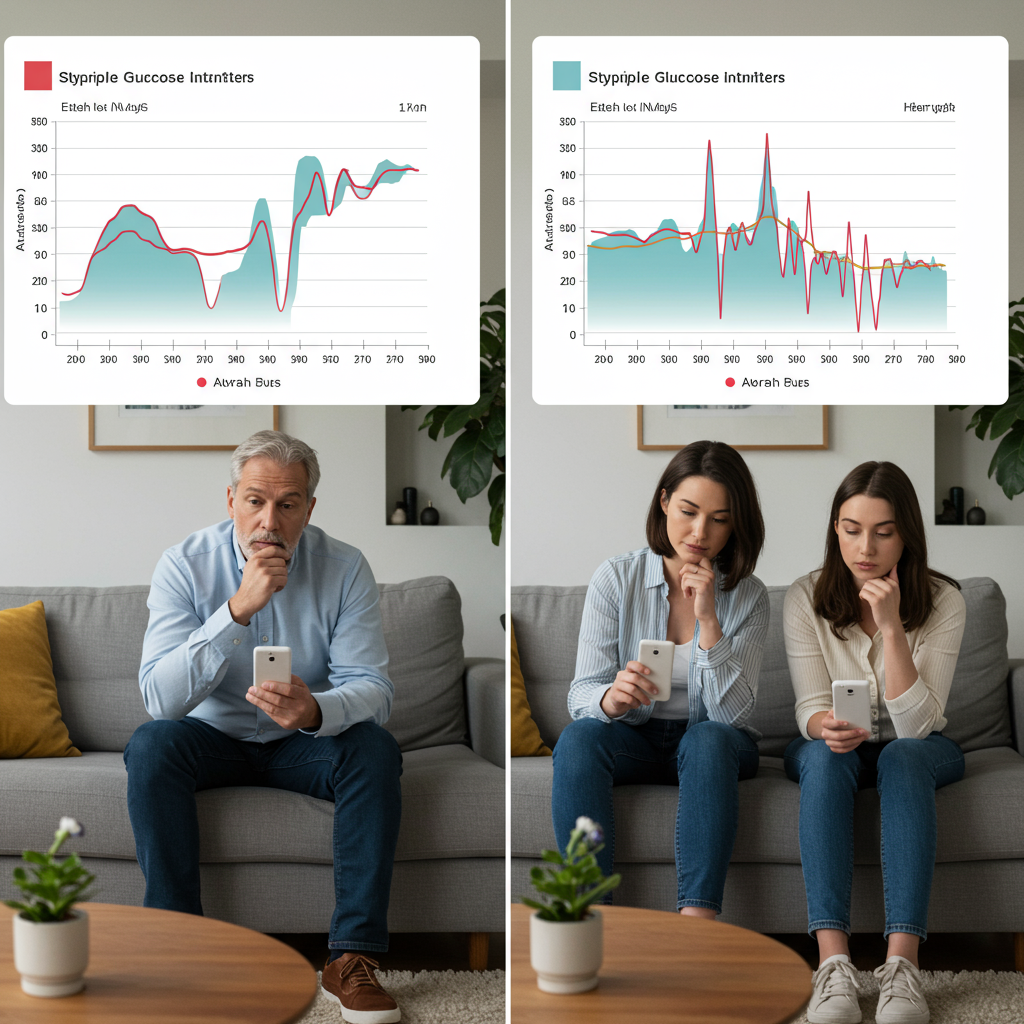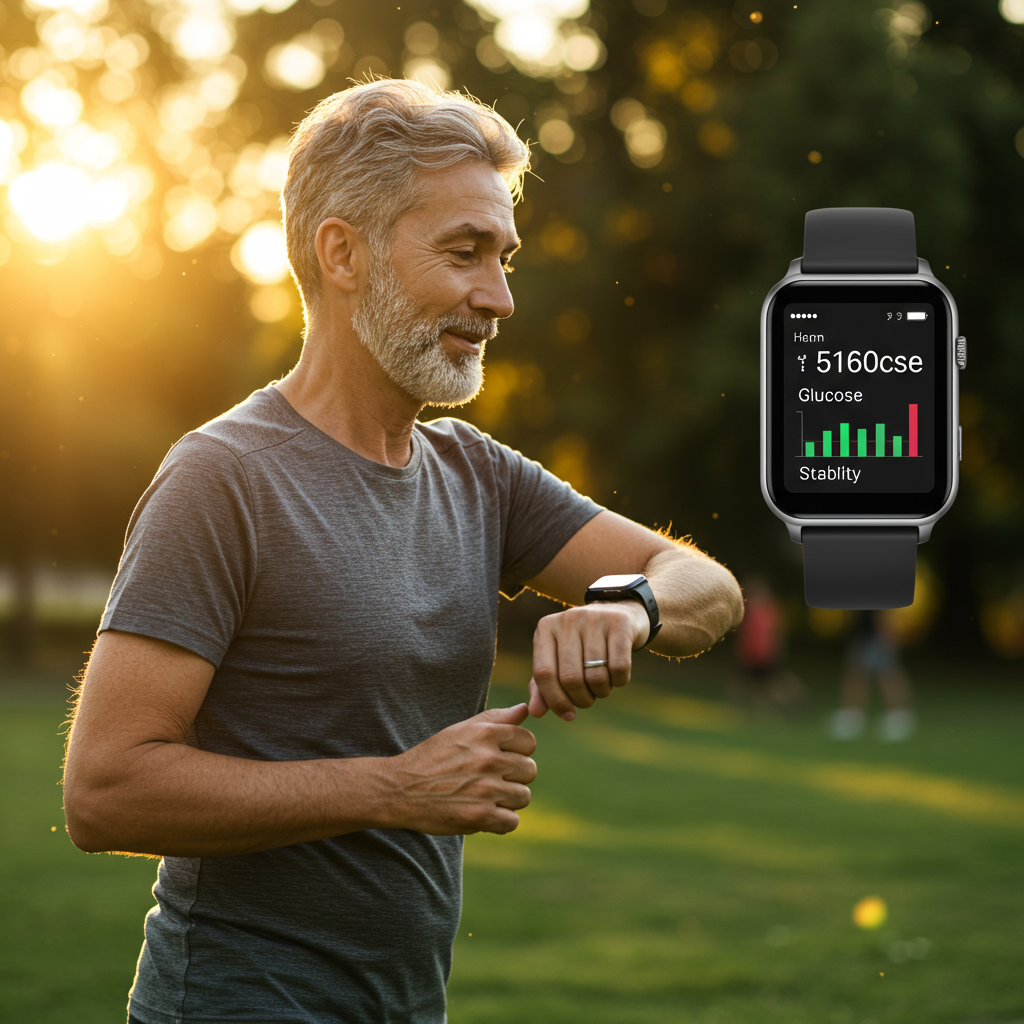Beyond the A1C: Why Blood Sugar Variability May Be Your Most Important Metric
If you're managing diabetes or concerned about metabolic health, you're likely familiar with HbA1c—the gold standard for measuring long-term blood glucose control. But focusing solely on average glucose levels might be missing a crucial piece of the metabolic health puzzle: glycemic variability. Let's explore why the ups and downs of your blood sugar might matter just as much as—or even more than—your average readings.
The Limitations of Average Glucose Measurements
For decades, medicine has emphasized average blood glucose as the primary metric for assessing diabetes management. HbA1c provides a three-month average of blood glucose levels, and many continuous glucose monitoring (CGM) systems highlight average glucose as a key metric.
However, two people with identical HbA1c readings can have dramatically different glycemic profiles. One person might maintain relatively stable blood glucose levels throughout the day, while another experiences significant peaks and valleys—yet both show the same average. This distinction is crucial because these patterns affect the body in profoundly different ways.
Consider this analogy: if you're driving from New York to Los Angeles, would you rather maintain a steady 65 mph the entire way, or alternate between 120 mph and coming to a complete stop? Both approaches might average 65 mph, but the physiological impact on your body (and car) would be vastly different.

Why Glycemic Variability Matters
Glycemic variability—the swings between high and low blood glucose levels—creates unique stresses on the body that average measurements simply don't capture.
Research increasingly suggests that these fluctuations may independently contribute to diabetes complications through several mechanisms:
-
Oxidative Stress: Rapid changes in blood glucose levels, particularly sharp increases, generate more reactive oxygen species than sustained high glucose. This oxidative stress damages blood vessels and tissues.
-
Endothelial Dysfunction: Blood vessel linings (endothelium) suffer greater damage from glucose fluctuations than from consistently elevated levels, potentially accelerating atherosclerosis.
-
Inflammatory Responses: Glycemic variability triggers inflammatory pathways that chronically elevated but stable glucose levels don't activate to the same degree.
-
Quality of Life: From a practical standpoint, individuals with high glycemic variability often experience more noticeable symptoms—energy crashes, hunger, irritability, and impaired cognitive function—even if their A1c looks acceptable.
Some studies suggest that glycemic variability may be a stronger predictor of hypoglycemic episodes and vascular complications than HbA1c alone. This makes intuitive sense: a person whose glucose frequently drops below 70 mg/dL faces immediate risks that won't be reflected in their average glucose measurements.
Finding Balance: The Integrated Approach
The optimal approach isn't choosing between minimizing average glucose or reducing variability—it's addressing both simultaneously.
Here are practical strategies that target both metrics:
-
Time-restricted eating: Condensing your eating window to 8-10 hours daily can reduce both average glucose and glycemic excursions.
-
Exercise timing: Physical activity after meals blunts post-meal glucose spikes without necessarily changing your daily average.
-
Meal composition: Leading with protein, fats, and fiber before consuming carbohydrates can dramatically reduce meal-related glucose fluctuations.
-
Continuous monitoring: CGM devices provide invaluable real-time feedback on how specific foods, exercise, stress, and sleep affect your unique glucose patterns.
-
Stress management: Chronic stress increases cortisol, which raises blood glucose and contributes to variability—meditation, adequate sleep, and other stress-reduction techniques can help stabilize glucose levels.

For those with access to continuous glucose monitoring, metrics like "time in range" (percentage of time spent between 70-140 mg/dL) and coefficient of variation (standard deviation divided by mean glucose) provide more comprehensive pictures of glycemic health than average glucose alone.
Conclusion: The Complete Picture
The debate shouldn't be framed as variability versus average glucose—both matter. However, as our understanding of metabolic health evolves, glycemic variability deserves significantly more attention than it typically receives in standard clinical care.
The ideal targets appear to be maintaining glucose levels primarily between 70-110 mg/dL (with post-meal excursions below 140 mg/dL), with minimal spikes and drops. This approach addresses both average levels and variability, potentially offering the greatest protection against both short and long-term complications.
Whether you have diabetes or are simply optimizing your metabolic health, consider looking beyond your average numbers. The stability of your glucose may be just as important for longevity and quality of life as keeping your average in check.

References:
Monnier L, Colette C, Owens D. The glycemic triumvirate and diabetic complications: is the whole greater than the sum of its component parts? Diabetes Research and Clinical Practice. 2012;95(3):303-311.
Hirsch IB. Glycemic Variability and Diabetes Complications: Does It Matter? Of Course It Does! Diabetes Care. 2015;38(8):1610-1614.






